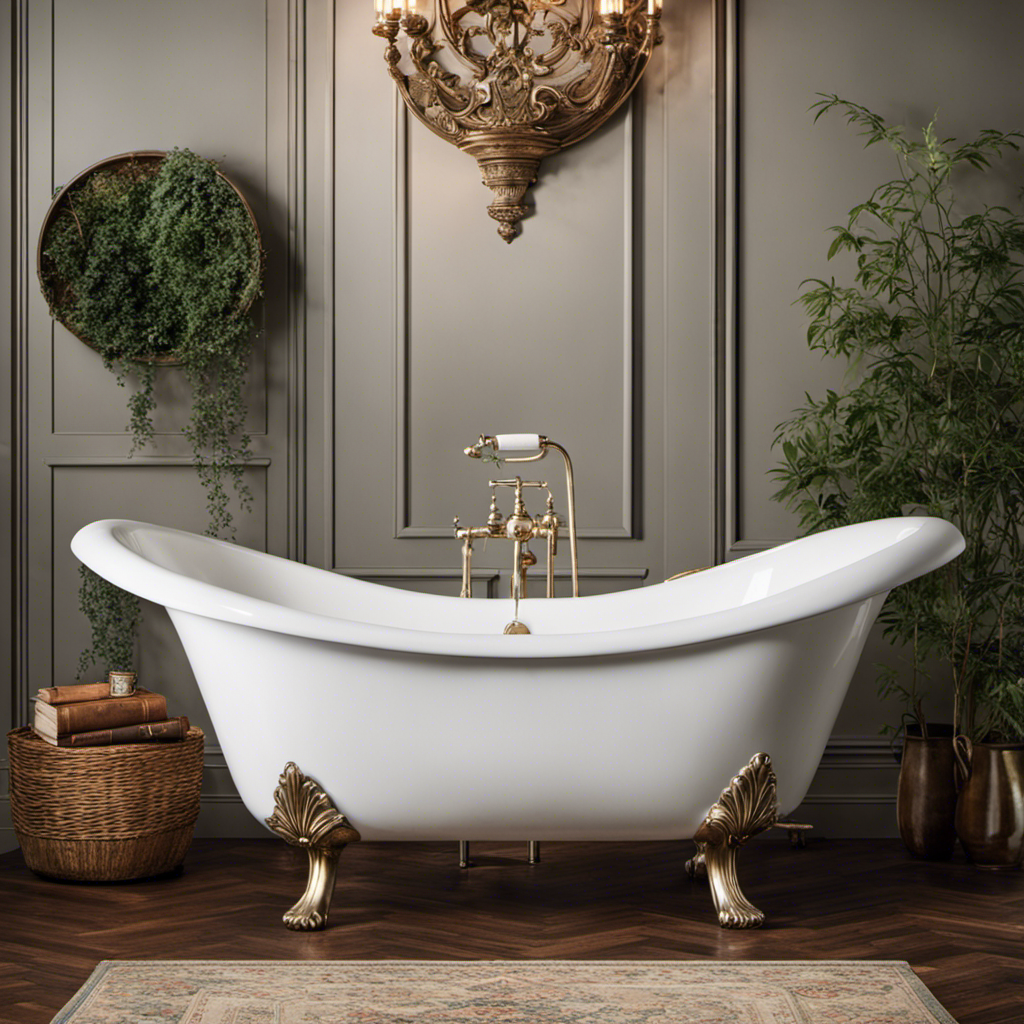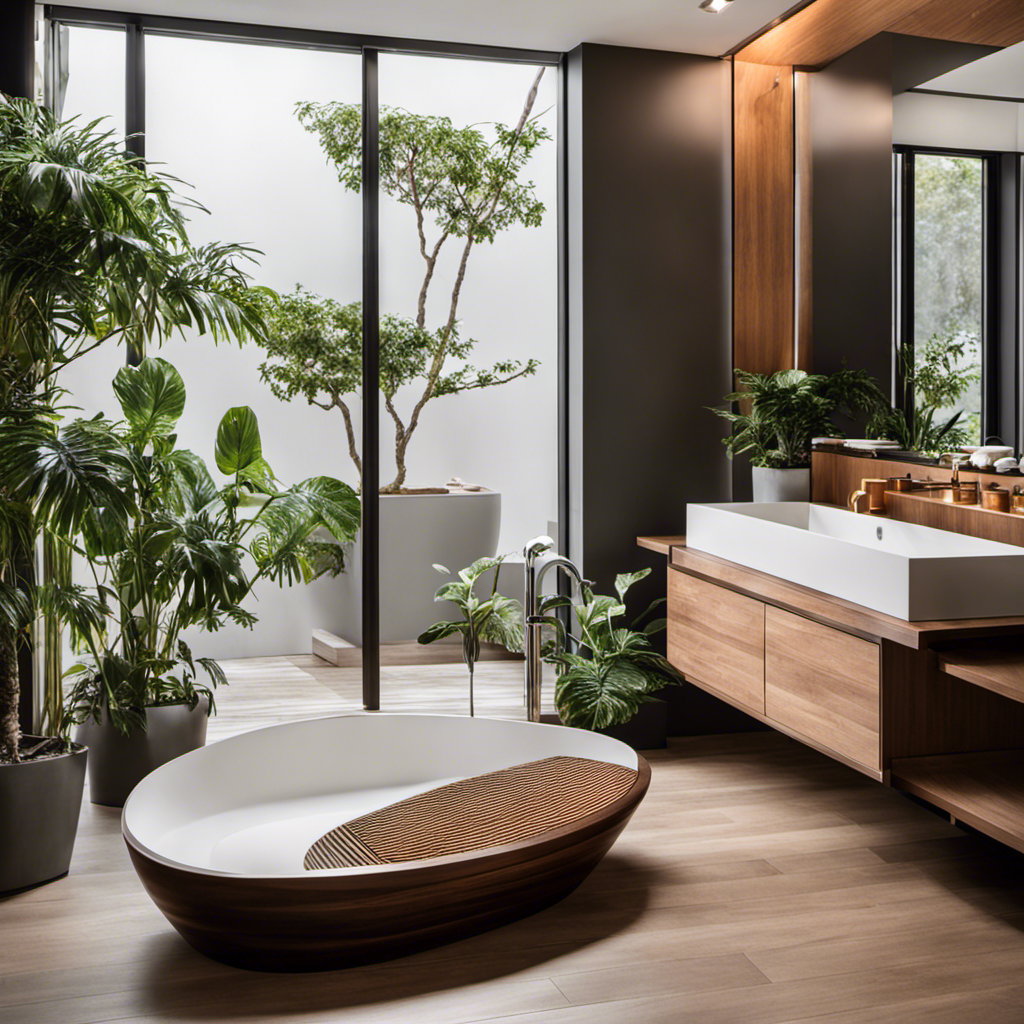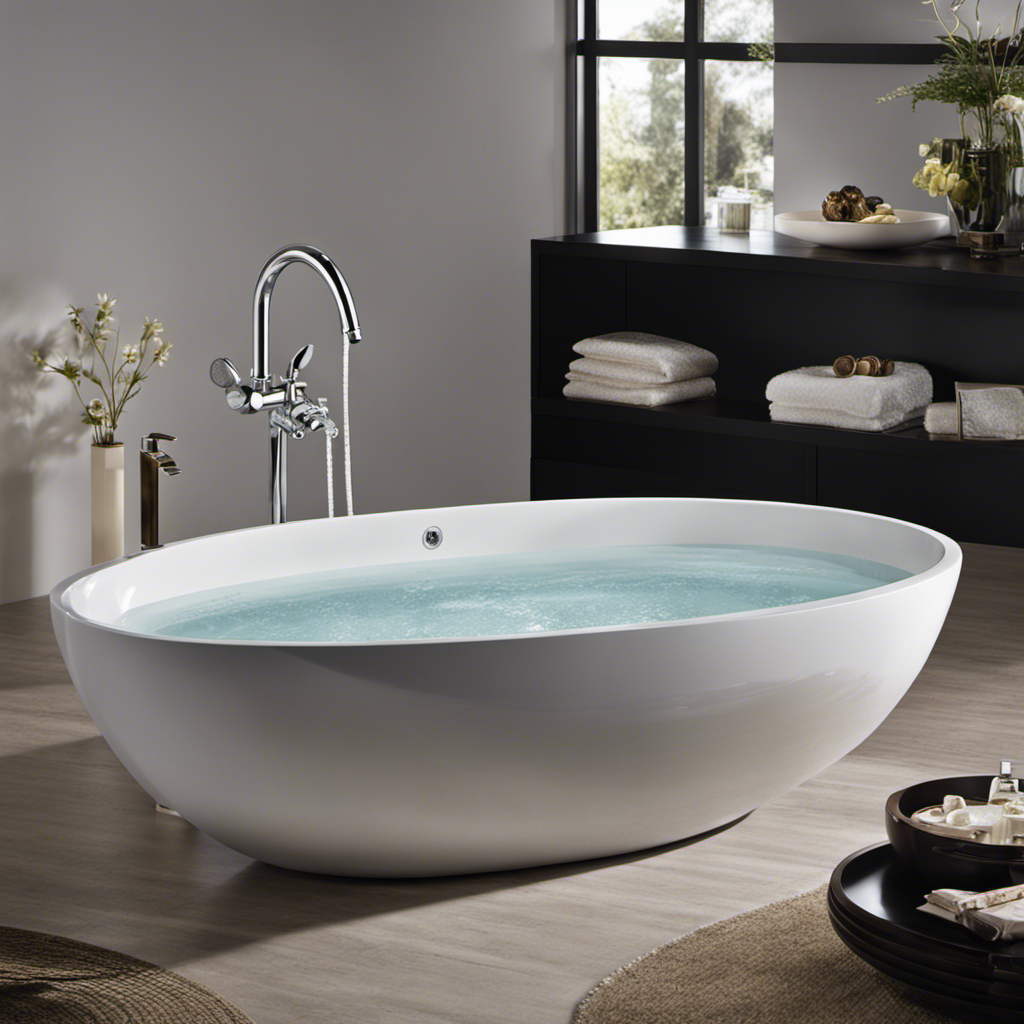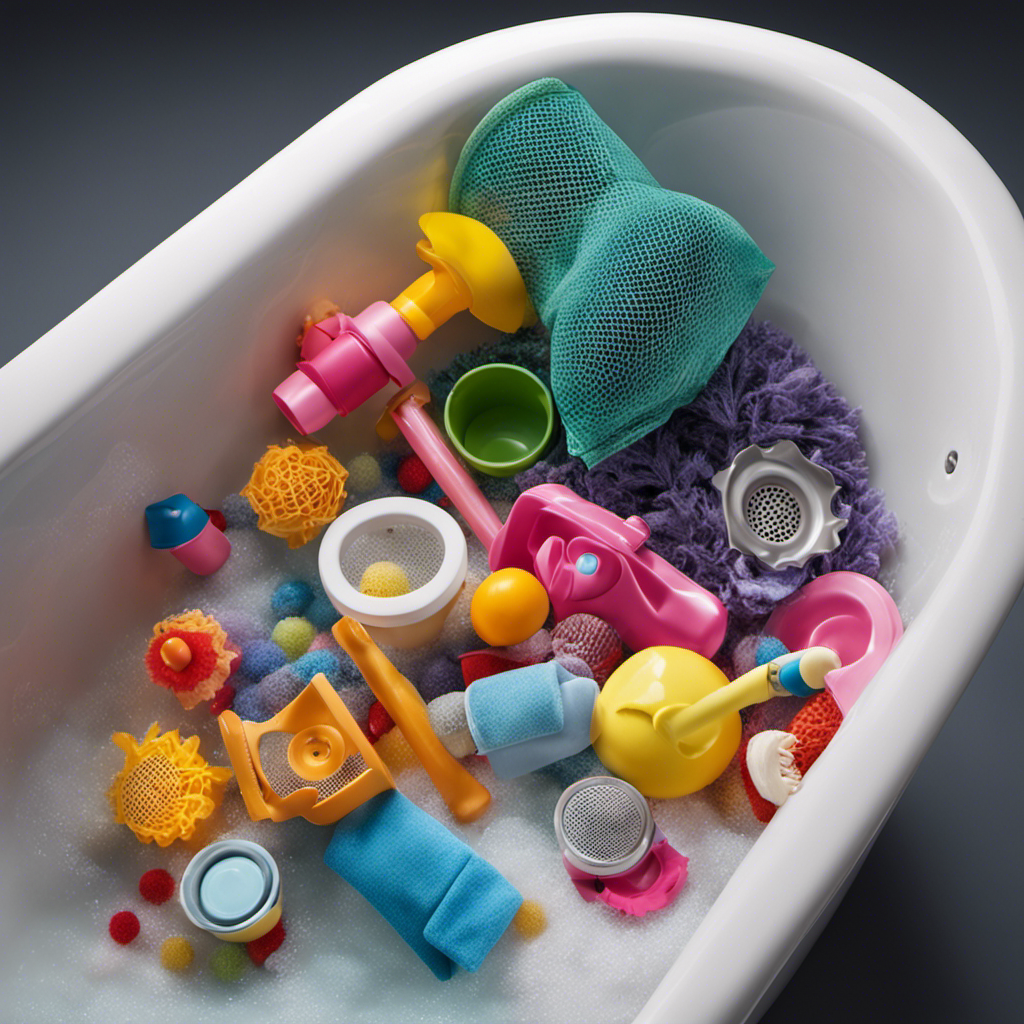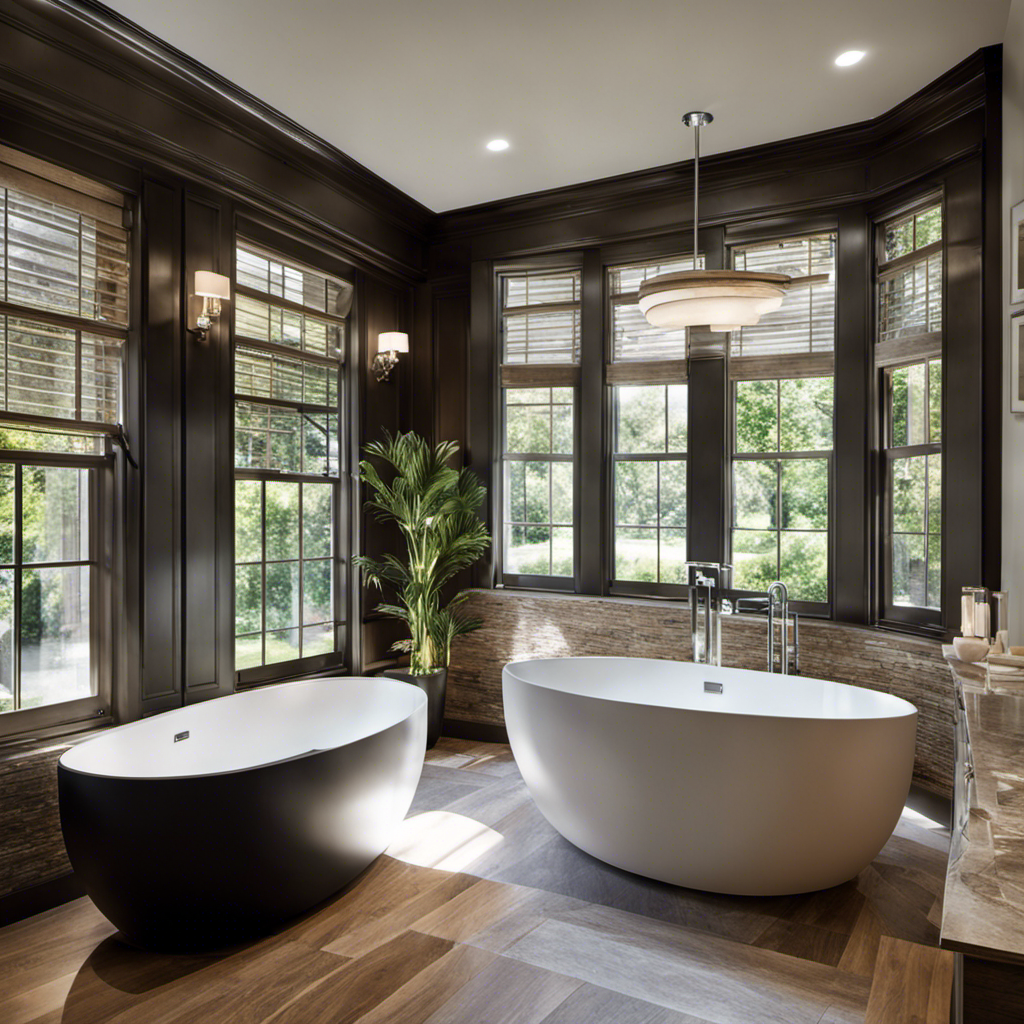I know what you’re thinking: ‘How many gallons can a clawfoot bathtub really hold?’ Well, let me tell you, these vintage fixtures may look charming, but they can surprise you with their capacity.
In this article, we’ll explore the historical significance of clawfoot bathtubs, the factors that affect their capacity, and how to measure the gallons they can hold.
So, if you’re ready to dive into the fascinating world of clawfoot bathtubs, let’s get started!
Key Takeaways
- Clawfoot bathtubs gained popularity in the late 19th century as luxurious fixtures.
- They became a symbol of status and wealth, adding elegance and sophistication to bathrooms.
- The average gallon capacity of clawfoot bathtubs is around 40 to 60 gallons, with larger sizes holding up to 70 or 80 gallons.
- To measure the gallons in a clawfoot bathtub, fill it until it reaches the overflow drain and calculate the volume in cubic inches, then divide by 231 to convert to gallons.
Historical Significance of Clawfoot Bathtubs
The historical significance of clawfoot bathtubs can’t be overlooked. These iconic fixtures have played a pivotal role in the historical evolution of bathing practices and hold a deep cultural significance.
Clawfoot bathtubs first gained popularity in the late 19th century and were considered a luxurious addition to any household. The design of these tubs, with their raised legs resembling animal claws, added an element of elegance and sophistication to bathrooms. They became a symbol of status and wealth, as only the affluent could afford such extravagant fixtures.
Additionally, clawfoot bathtubs revolutionized bathing habits by providing a more comfortable and relaxing experience. They allowed people to soak in warm water, promoting cleanliness and personal hygiene.
Today, these bathtubs continue to be cherished for their timeless design and historical significance.
Factors Affecting the Capacity of a Clawfoot Bathtub
To determine the capacity of a clawfoot bathtub, you should consider factors such as size, shape, and water depth. These factors influence water consumption in clawfoot bathtubs and can affect the overall experience of relaxation.
Here are some factors to consider:
-
Size: The larger the bathtub, the more water it can hold, allowing for a longer and more indulgent soak.
-
Shape: Different shapes can impact the amount of water needed to fill the bathtub. Some shapes may require more water than others.
-
Water Depth: The depth of the bathtub will determine how much water is needed to fully submerge your body.
-
Personal Preference: Ultimately, the amount of water you use may depend on your personal preference and desired level of relaxation.
Considering these factors can help you determine the ideal capacity for your clawfoot bathtub and enhance your bathing experience.
Now, let’s explore the average gallon capacity of clawfoot bathtubs.
Average Gallon Capacity of Clawfoot Bathtubs
When determining the ideal capacity for your clawfoot bathtub, you should consider the average gallon capacity. Clawfoot bathtubs come in various designs and sizes, and their gallon capacity can vary accordingly.
The average gallon capacity of a standard clawfoot bathtub is around 40 to 60 gallons. However, larger-sized clawfoot bathtubs can hold up to 70 or 80 gallons of water.
The benefits of using clawfoot bathtubs are numerous. They add a touch of elegance and vintage charm to any bathroom, and their classic design never goes out of style. Additionally, clawfoot bathtubs provide a deep and spacious bathing experience, allowing you to fully relax and unwind.
Now that you know the average gallon capacity, let’s move on to how to measure the gallons in a clawfoot bathtub.
How to Measure the Gallons in a Clawfoot Bathtub
If you’re wondering how to measure the gallons in your clawfoot bathtub, simply follow these easy steps:
-
Gather the necessary tools: a measuring tape, a bucket, and a calculator.
-
Fill the bathtub with water until it reaches the overflow drain.
-
Use the measuring tape to measure the length, width, and depth of the water.
-
Multiply these measurements together to calculate the volume of the water in cubic inches.
-
Divide the volume by 231 to convert cubic inches to gallons.
Calculating water usage in your clawfoot bathtub is important for managing your water consumption and understanding its impact on the environment. By knowing the exact amount of water your bathtub holds, you can make more informed decisions about your bathing habits.
Furthermore, clawfoot bathtubs have several benefits, including their aesthetic appeal and spaciousness. They provide a luxurious and relaxing bathing experience, while also adding a touch of elegance to your bathroom decor.
Tips for Maximizing Water Efficiency in Clawfoot Bathtubs
Maximizing water efficiency in clawfoot bathtubs can be achieved by implementing simple tips and tricks.
As someone who is passionate about eco-friendly bathing practices, I have found several water-saving techniques that can make a significant difference.
First, consider taking shorter showers instead of filling up the entire bathtub. This can help reduce water consumption significantly.
Additionally, installing a low-flow showerhead can further minimize water usage without compromising on the shower experience.
Another tip is to fix any leaks or drips in the plumbing system promptly to avoid wasting water unnecessarily.
Finally, consider using a water-saving bath plug or insert that restricts the amount of water needed for a bath.
Conclusion
In conclusion, the historical significance of clawfoot bathtubs cannot be overlooked. These iconic fixtures have stood the test of time and continue to add a touch of elegance to any bathroom.
Factors such as size, shape, and material can affect the capacity of a clawfoot bathtub, but on average, they can hold around 50 to 60 gallons of water.
By measuring the gallons in a clawfoot bathtub and implementing water-efficient practices, we can ensure maximum enjoyment and conservation of this timeless bathing experience.
